Meet Quetzalcoatlus – World’s Largest Flying Animal Had A Wingspan Of Up To 52 Feet (15.9 m)
Eddie Gonzales Jr. - AncientPages.com - About 100 to 66 million years ago, during the Late Cretaceous, the climate was warmer than the present. Many new species appeared on all continents, including the giant Quetzalcoatlus that lived in North America.
The Quetzalcoatlus compared to a man, car, and pterodactyl. Source Pinterest
With a wingspan reaching as much as 15.9 m (52 ft), Quetzalcoatlus is one of the largest known flying animals ever. This giant animal was named after the Mesoamerican feathered serpent god, Quetzalcoatl, who was well-known under different names in the region.
The Aztecs called him Quetzalcoatl, and the ancient Maya called him Kukulkan.
The first Quetzalcoatlus fossils were discovered in Texas, the United States, from the Maastrichtian Javelina Formation at Big Bend National Park in 1971 by Douglas A. Lawson. Later, Lawson discovered a second site where he found fragmentary skeletons of much smaller individuals.
It was how we learned about this giant flying animal's existence.
Quetzalcoatlus lived among dinosaurs, but the animal was not a dinosaur. Quetzalcoatlus was the most famous member of the azhdarchids, a family of pterosaurs, a flying reptile.
"The pterosaurs and the dinosaurs appear to have evolved on divergent paths from earlier reptilian life forms. It also seems clear that the pterosaurs did not evolve into the birds.
In this regard, the anatomy is that of the wing. In a pterosaur, the fourth finger of each forelimb was considerably elongated. It supported the front edge of a membrane that stretched from the flank of the body to the farthest tip of the finger. The other fingers were short and reptilian., with a sharp claw at the end of each one.
In a bird, the second finger is the principal strut of the wing, and in the bird, much of the wing consists of course of feathers," Wann Langston explained.
The animal is often depicted with feathers, but researchers think Quetzalcoatlus was covered with pycnofibres, hair-like fibers that differ from animal hair. When Quetzalcoatlus stood on the ground, it was as tall as a giraffe, more than five meters tall (16.4 ft), and weighed 250 kilograms.
Quetzalcoatlus soared the skies, and the animal could see many giant animals walking on our planet. Then, everything ended because about 65 million years ago, about three-quarters of Earth's plant and animal species went extinct.
This event is known as the K-T mass extinction because it occurred at the boundary between the Cretaceous (K) and Tertiary (T) periods. The dinosaurs were the most famous animals to perish, and the Quetzalcoatlus did not survive either.
Updated on October 30, 2024
Written by Eddie Gonzales Jr. - AncientPages.com - MessageToEagle.com Staff Writer
More From Ancient Pages
-
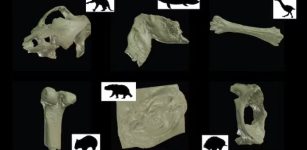 New Virtual Museum Reveals 600 Million Years Of Australian Fossils In Unprecedented 3D Detail
Fossils | Jun 2, 2023
New Virtual Museum Reveals 600 Million Years Of Australian Fossils In Unprecedented 3D Detail
Fossils | Jun 2, 2023 -
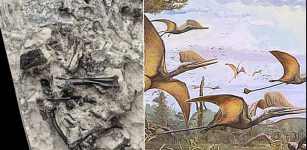 New Species Of Winged Reptile Found On Isle of Skye – Its Diversity Was Greater Than Previously Assumed
Paleontology | Feb 8, 2024
New Species Of Winged Reptile Found On Isle of Skye – Its Diversity Was Greater Than Previously Assumed
Paleontology | Feb 8, 2024 -
 Is Huge New Ichthyosaur, One Of The Largest Animals Ever Uncovered?
Fossils | Jul 10, 2023
Is Huge New Ichthyosaur, One Of The Largest Animals Ever Uncovered?
Fossils | Jul 10, 2023 -
 Study Finds 107-Million-Year-Old Pterosaur Bones Are Oldest In Australia
Paleontology | May 31, 2023
Study Finds 107-Million-Year-Old Pterosaur Bones Are Oldest In Australia
Paleontology | May 31, 2023 -
 Unusual 455-Million-Year-Old Fossil Fish Can Reveal How Our Skulls Evolved
Fossils | Sep 26, 2023
Unusual 455-Million-Year-Old Fossil Fish Can Reveal How Our Skulls Evolved
Fossils | Sep 26, 2023 -
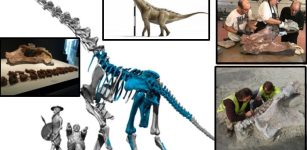 Qunkasaura: New Cretaceous Sauropod Found In Iberian Peninsula
Paleontology | Sep 6, 2024
Qunkasaura: New Cretaceous Sauropod Found In Iberian Peninsula
Paleontology | Sep 6, 2024 -
 Earliest Evidence Of Evolutionary Trait That Enabled Dinosaurs To Become Giants – Brazilian Fossil Reveals
Evolution | Jun 21, 2023
Earliest Evidence Of Evolutionary Trait That Enabled Dinosaurs To Become Giants – Brazilian Fossil Reveals
Evolution | Jun 21, 2023 -
 ‘Giant’ Predator Worms More Than Half A Billion Years Old Discovered In North Greenland
Paleontology | Jan 4, 2024
‘Giant’ Predator Worms More Than Half A Billion Years Old Discovered In North Greenland
Paleontology | Jan 4, 2024 -
 Whale That Lived 40 Million Years Ago Could Be The Heaviest Animal To Have Ever Lived
Paleontology | Aug 8, 2023
Whale That Lived 40 Million Years Ago Could Be The Heaviest Animal To Have Ever Lived
Paleontology | Aug 8, 2023 -
 Unusually Well-Preserved “Marine Dwarf World” From 462 Million Years Ago Found At Castle Bank, Wales
Paleontology | May 1, 2023
Unusually Well-Preserved “Marine Dwarf World” From 462 Million Years Ago Found At Castle Bank, Wales
Paleontology | May 1, 2023 -
 Why Was The Late Ordovician Mass Extinction Event Odd?
Paleontology | May 19, 2023
Why Was The Late Ordovician Mass Extinction Event Odd?
Paleontology | May 19, 2023 -
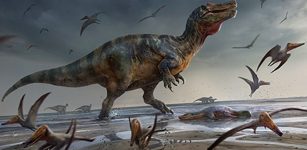 Multiple Species Of Semi-Aquatic Dinosaur May Have Roamed Pre-Historic Britain
Paleontology | Jun 14, 2023
Multiple Species Of Semi-Aquatic Dinosaur May Have Roamed Pre-Historic Britain
Paleontology | Jun 14, 2023 -
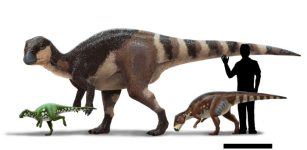 Meet Europe’s Enigmatic Dinosaurs – The Late Cretaceous Rhabdodontids
Paleontology | Aug 31, 2023
Meet Europe’s Enigmatic Dinosaurs – The Late Cretaceous Rhabdodontids
Paleontology | Aug 31, 2023 -
 Sensational Discovery: 300,000-Year-Old Snapshot – Oldest Human Footprints From Germany Found
Fossils | May 12, 2023
Sensational Discovery: 300,000-Year-Old Snapshot – Oldest Human Footprints From Germany Found
Fossils | May 12, 2023 -
 Fossil Of Prehistoric Saber-Toothed Cat Found In Texas
Fossils | Jun 11, 2024
Fossil Of Prehistoric Saber-Toothed Cat Found In Texas
Fossils | Jun 11, 2024 -
 80-Million-Year-Old Fossil In California Has Re-Written Natural History Of Cycad Plants
Fossils | May 3, 2023
80-Million-Year-Old Fossil In California Has Re-Written Natural History Of Cycad Plants
Fossils | May 3, 2023 -
 Oldest Polar Sea Reptile Fossil Ever Found In Southern Hemisphere
Paleontology | Jun 21, 2024
Oldest Polar Sea Reptile Fossil Ever Found In Southern Hemisphere
Paleontology | Jun 21, 2024 -
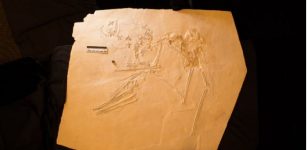 New Fossil Of 145-Million-Year-Old Pterosaur Nicknamed Elvis
Fossils | Jul 14, 2023
New Fossil Of 145-Million-Year-Old Pterosaur Nicknamed Elvis
Fossils | Jul 14, 2023 -
 Rare Find Of An Unusual Prehistoric ‘Giant Goose’ In Australia
Paleontology | Jun 8, 2024
Rare Find Of An Unusual Prehistoric ‘Giant Goose’ In Australia
Paleontology | Jun 8, 2024 -
 Computers Will Decide What Wiped Out The Dinosaurs
Paleontology | Oct 4, 2023
Computers Will Decide What Wiped Out The Dinosaurs
Paleontology | Oct 4, 2023

